Tailor Perfection: Customizing Sustainable Fashion for Everyone
A UX Concept for Customizable, Ethical Clothing
Overview
Role: UI & UX Designer – branding, product strategy, interface design
Timline: 3 weeks
Tools: Figma, Zoom, Notion
Timline: 3 weeks
Tools: Figma, Zoom, Notion
The Challenge
Sustainable clothing is often limited in sizing, style, or availability — forcing people to choose between what fits and what aligns with their values. Tailor Perfection challenges that trade-off by giving users tools to customize garments that are both sustainable and personal.
The Goal
Design a mobile experience that empowers users to customize ethical clothing with ease — combining the clarity of e-commerce with the personal attention of tailored fashion.
The Brand Concept
Tailor Perfection is a mobile concept designed to make ethical fashion more personal, practical, and aspirational. I led the design process from early concept sketches to a responsive high-fidelity UI, aligning product design with the brand’s core values of style, fairness, and sustainability. Every visual decision in Tailor Perfection stems from one of the brand’s three pillars — not just aesthetics, but function with meaning.
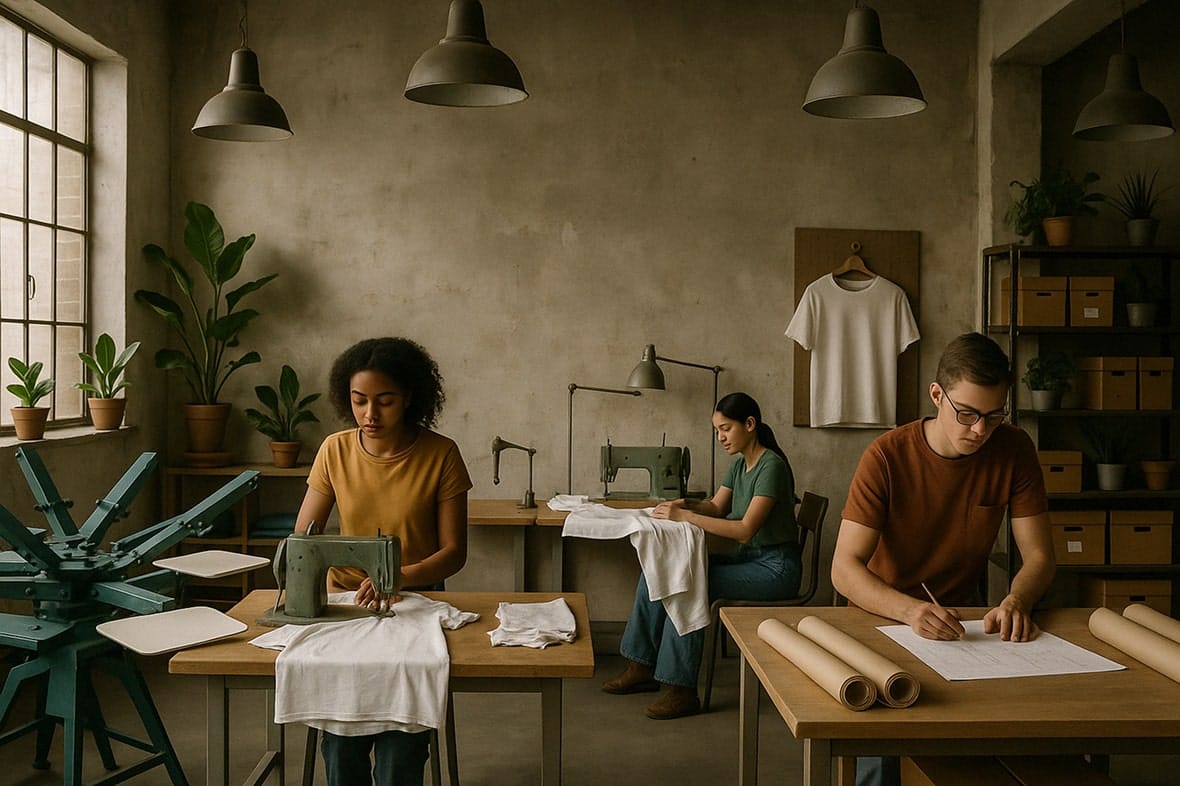
 Style — Customization Without Complexity
Style — Customization Without Complexity
Customization shouldn’t feel technical. I used classic serif type (Baskerville) for refinement, paired with Mulish for modern legibility. Typography, layout, and motion all support a brand that’s slow, not static — stylish, not trendy.
 Sustainability — More Than Greenwashing
Sustainability — More Than Greenwashing
Instead of loud “eco” cues, I used soft, nature-inspired tones and organic layout rhythms. The color system was intentionally quiet — to let transparency and product quality speak first.
 Fairness — The Brand’s Moral Core
Fairness — The Brand’s Moral Core
A calm, honest interface avoids dark patterns and communicates clearly. Generous spacing and well-structured flows reflect the care behind the product and its ethical origins.
The Design Process
From Sketches to Structure
I started the design process with hand-drawn sketches to explore layout, flow, and interaction without committing to visual detail too early. These low-fidelity explorations helped me quickly test ideas around customization, user onboarding, and profile management.
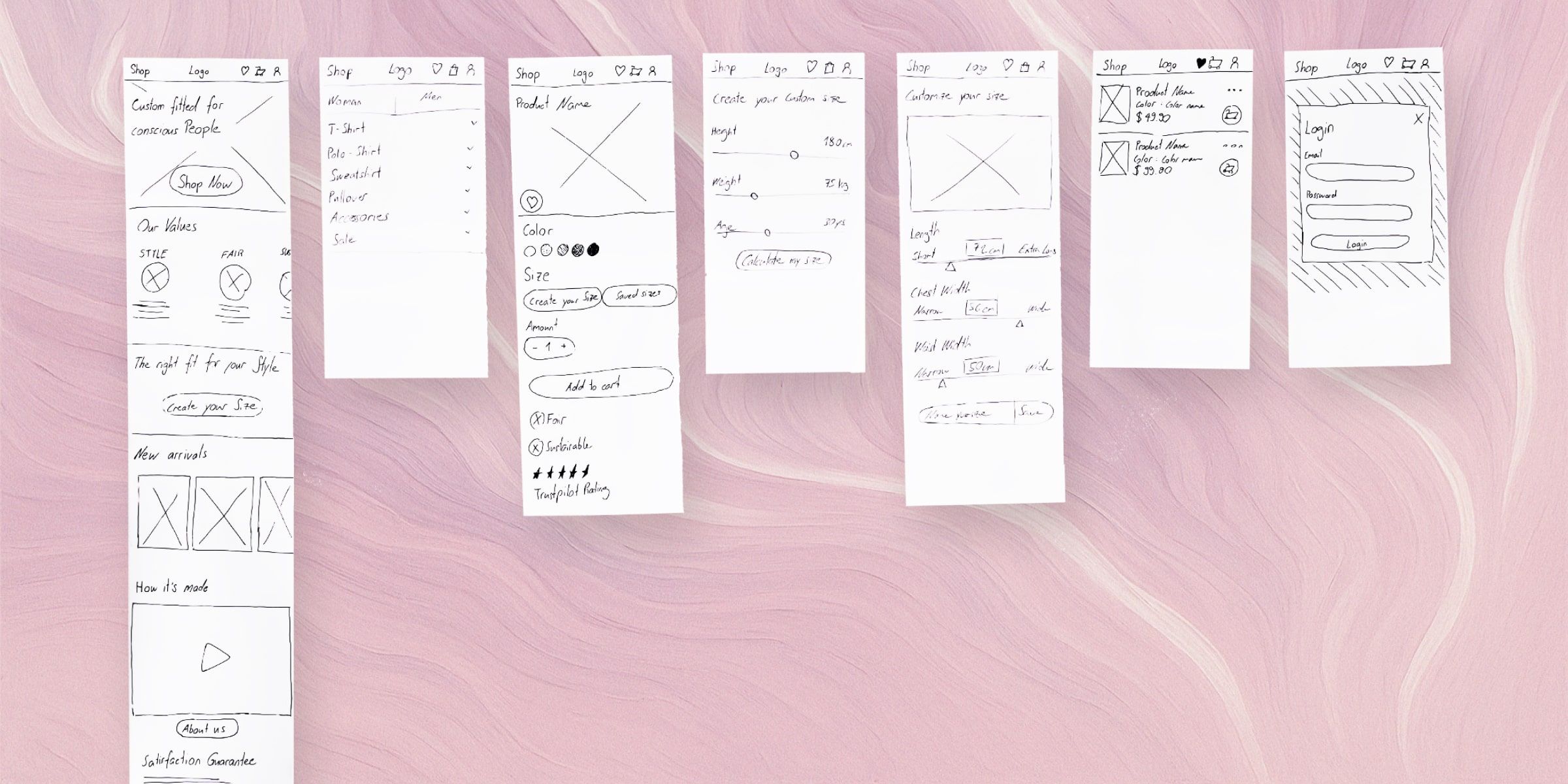
User Flows
I defined key user flows early to ensure that core actions — like customizing clothing, saving sizes, and managing orders — were smooth and intuitive.
Examples of mapped flows:
Add to favorites
View and edit order history
Sign in / register
Save and apply preferred sizes
Customize product features (fit, fabric, etc.)
Examples of mapped flows:
Add to favorites
View and edit order history
Sign in / register
Save and apply preferred sizes
Customize product features (fit, fabric, etc.)

Testing & Feedback
I tested low-fidelity wireframes with 3 users. The core architecture was well received, but one participant requested clearer section separation — an insight I used to improve layout hierarchy in the final UI.
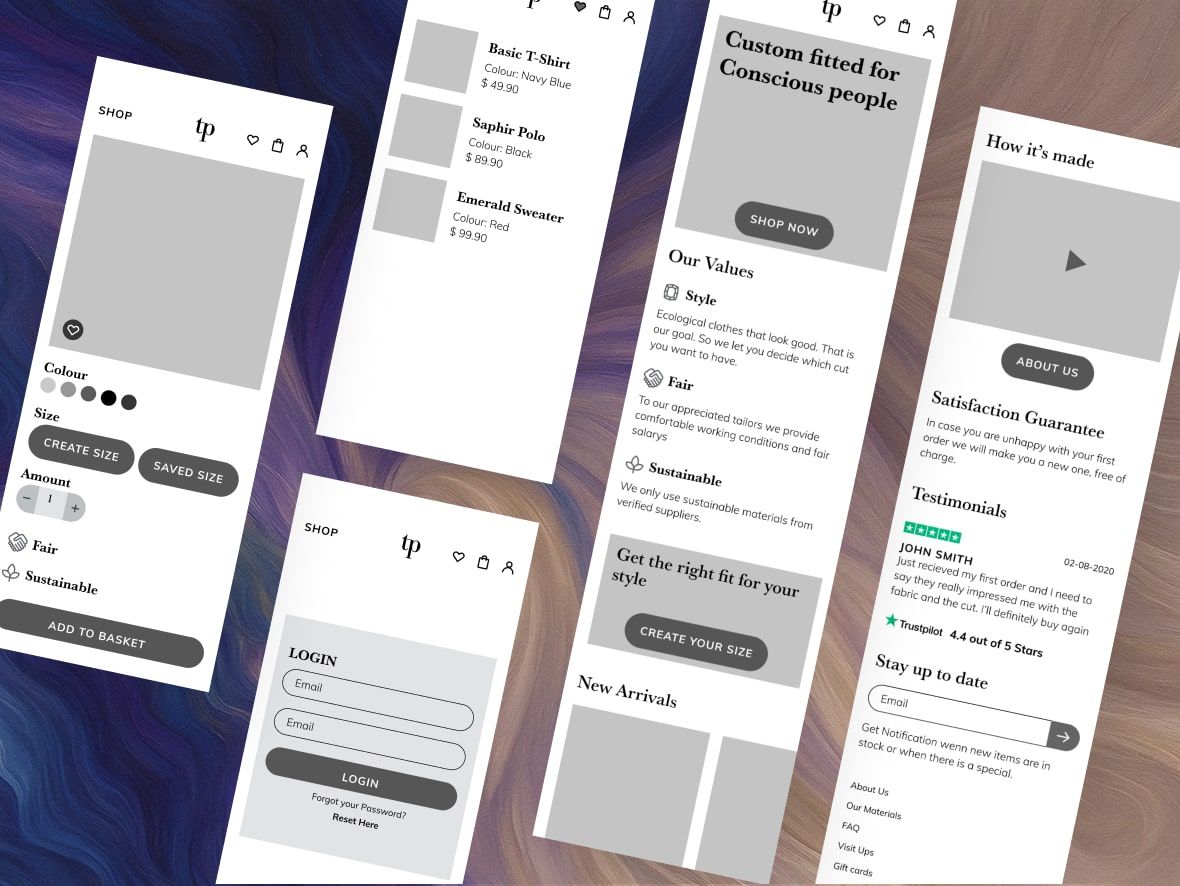
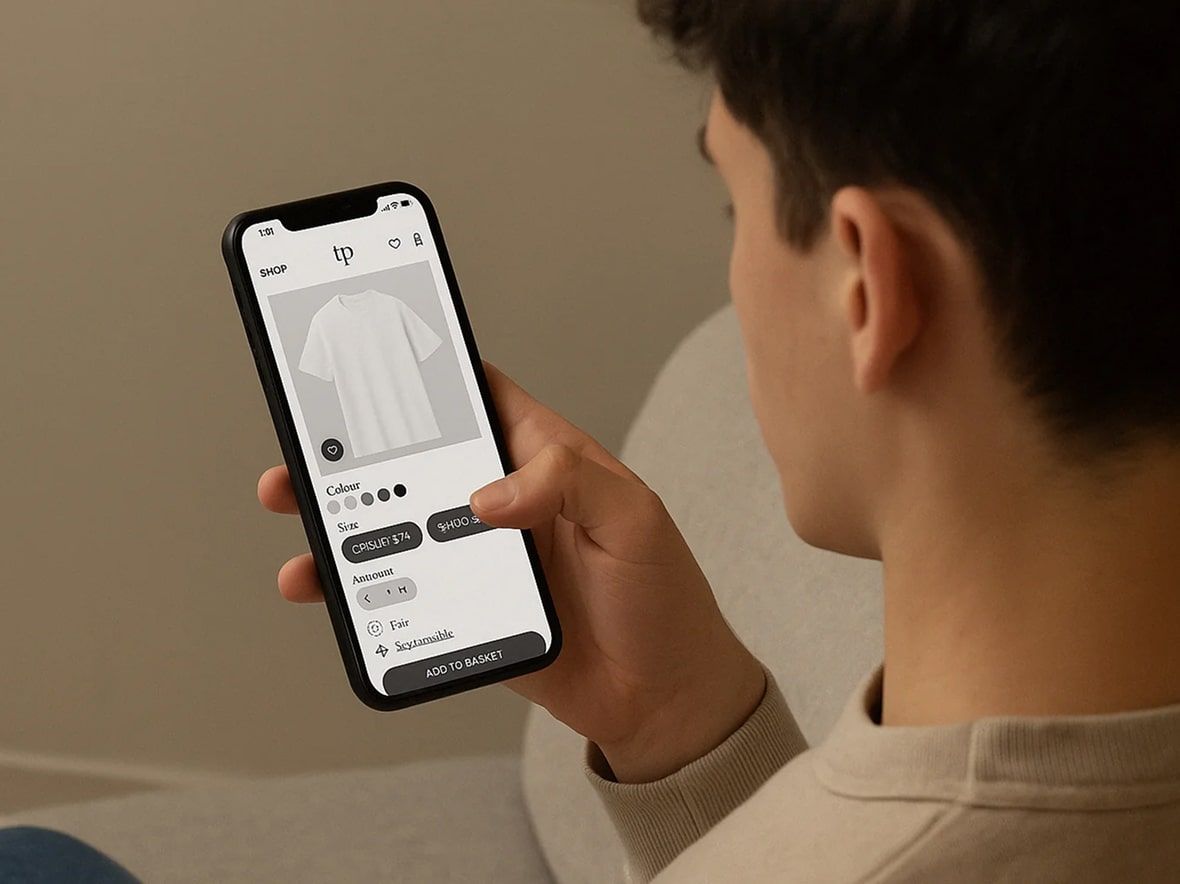
Visual Design System
Colour
Tailor Perfection uses nature-inspired tones:
Blue for authenticity
Purple for luxury/style
Brown for earthiness and honesty
Blue for authenticity
Purple for luxury/style
Brown for earthiness and honesty


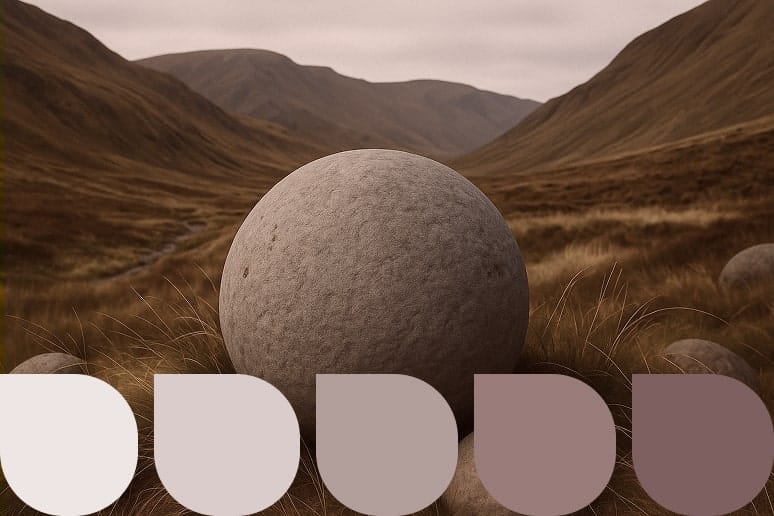
Typeface Baskerville
For headings the typeface Baskerville was chosen. It’s a very old and reliable serif typeface with beautiful details that perfectly align with the tailoring craftsmanship.
Typeface Mulish
As a secondary typeface, Mulish is used, because it has well-balanced and symmetrical characters that expresses the connection to nature. It also offers a modern touch, which is necessary to make the brand look timeless.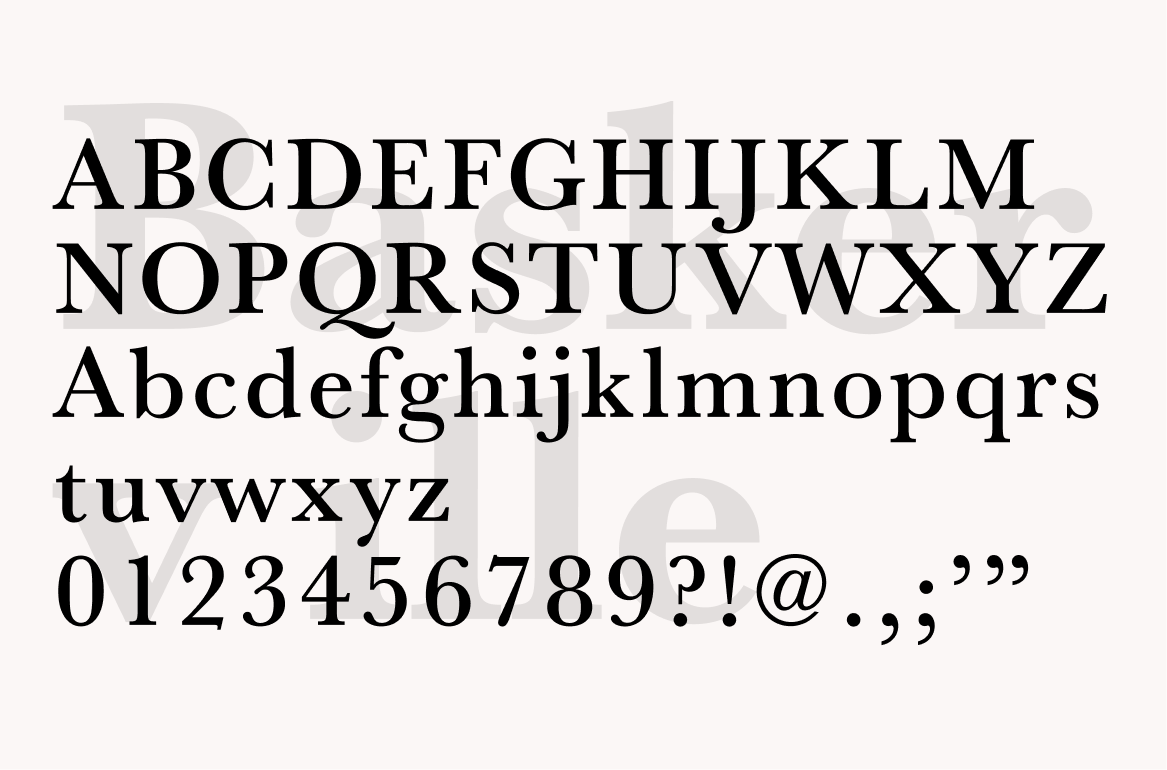
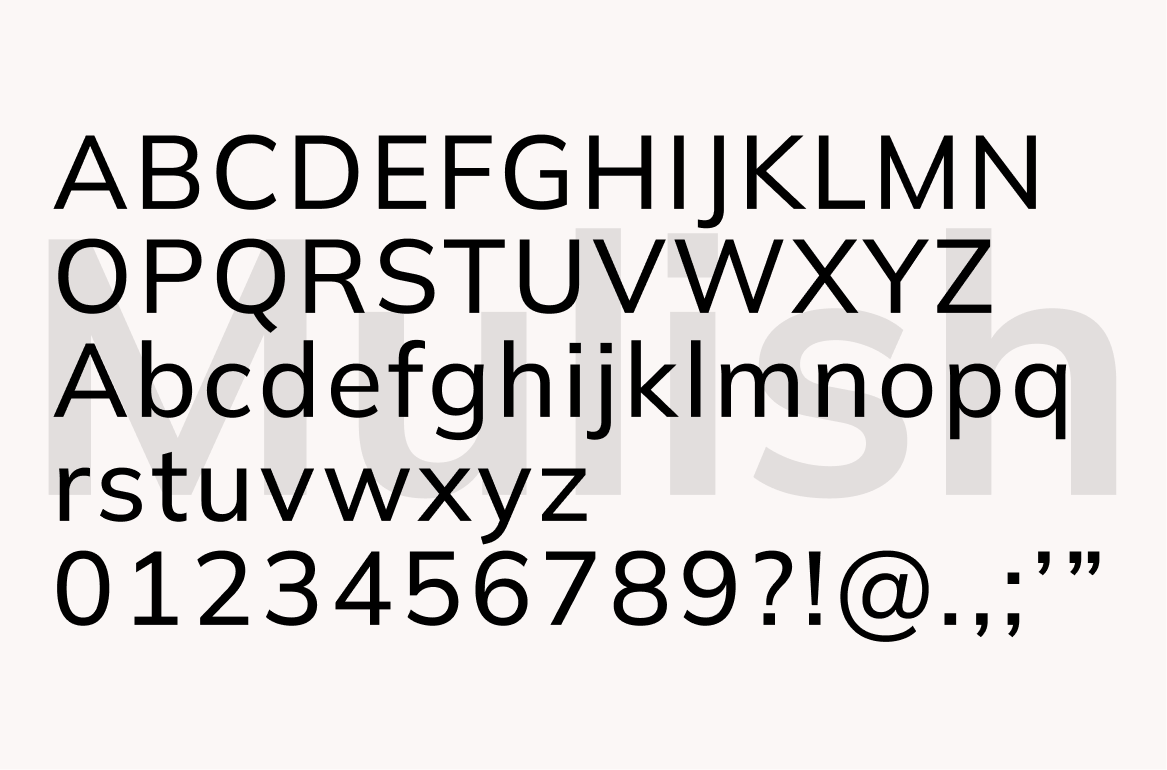
Style Guide
To make sure that the user interface looks consistent and can be extended by other people in the future, I created a style guide.
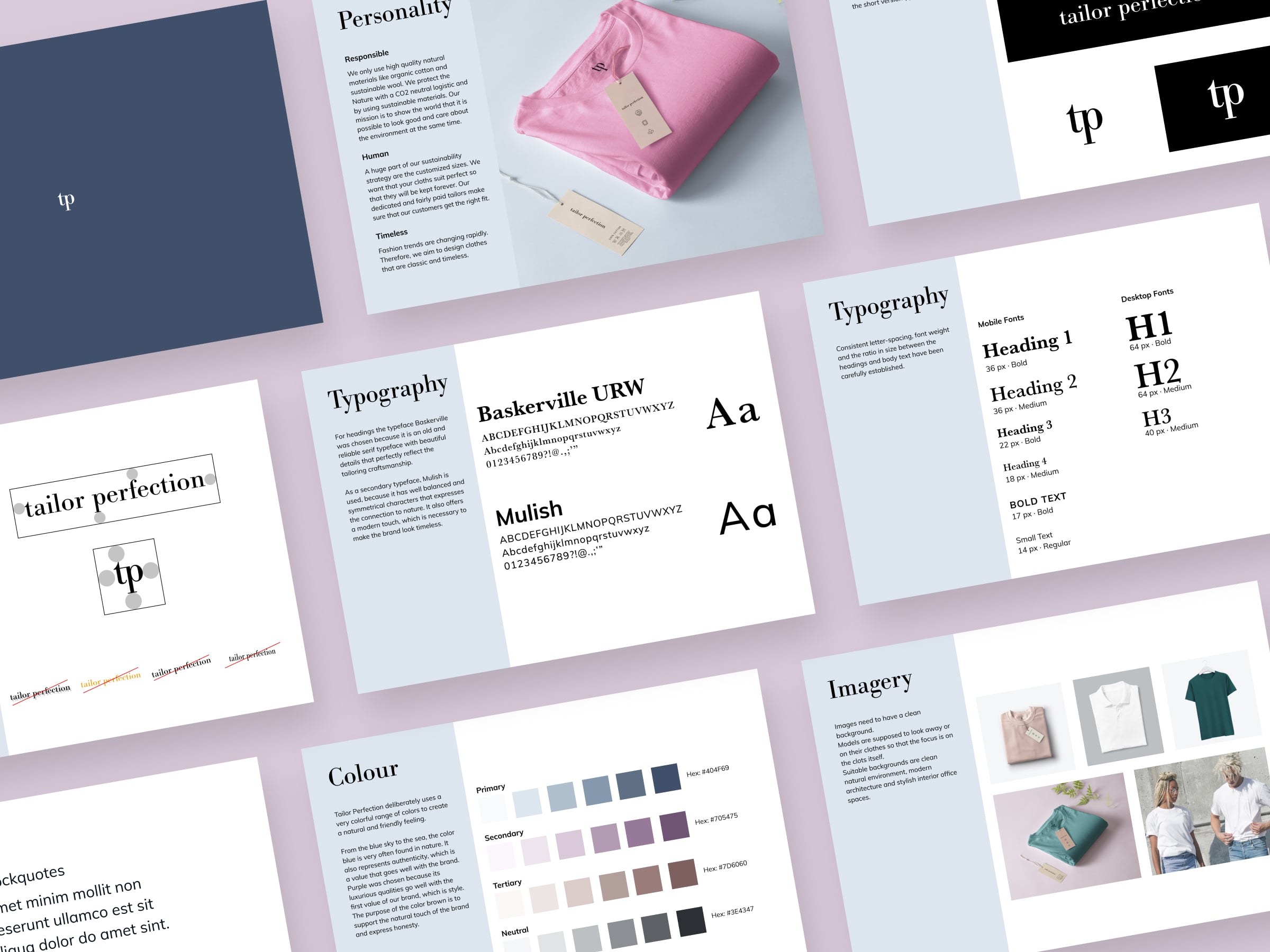
High Fidelity Wireframes
The final UI combines strategy, usability, and brand storytelling into a seamless experience. Every screen was designed to feel calm, personal, and frictionless — supporting users through customization without overwhelming them.
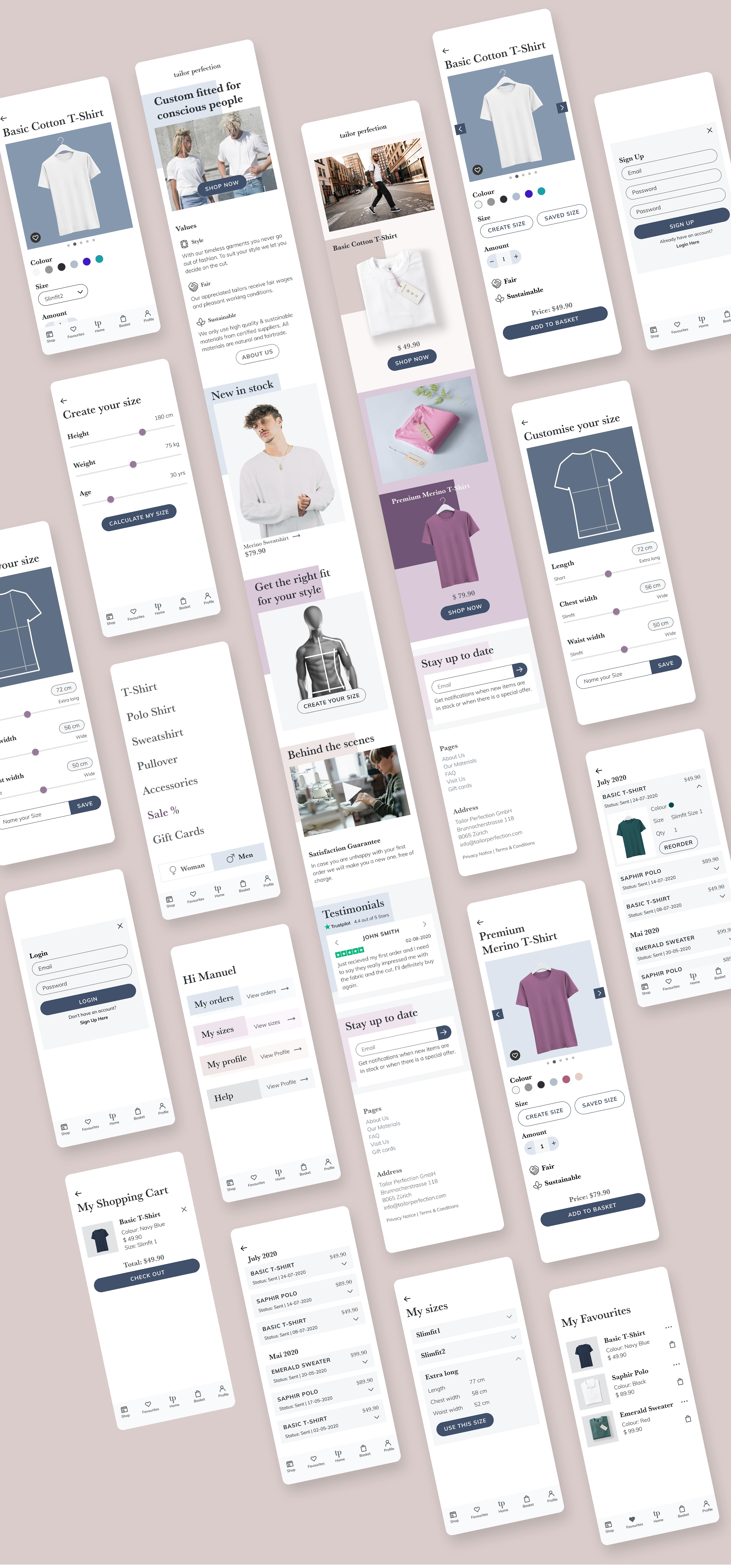
Let's talk
Copyright Manuel Bussmann · Imprint